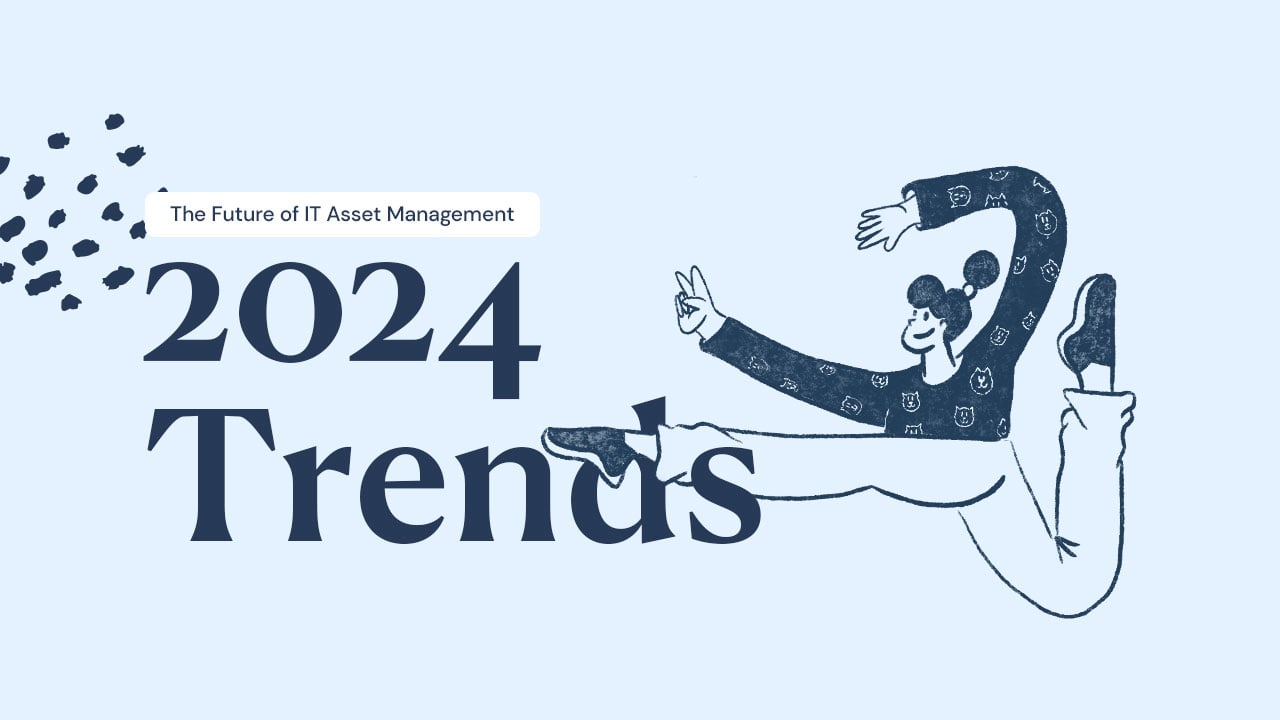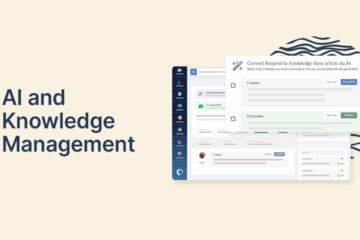Your IT Asset Management (ITAM) practice is not immune from the current corporate focus on IT optimization, which includes both asset utilization and ITAM operations. This, along with increasing technology complexities on the radar, are influencing many of the ITAM trends for 2024.
So, where is everything heading towards? To help you navigate this landscape and stay on top of your game, this blog shares insights into nine of the key ITAM trends IT professionals need to be aware of and potentially focus on in 2024.
- Getting the ITAM “basics” right
- Understanding how IT complexity impacts ITAM complexity
- An emphasis on Cloud Asset Management
- An increase in software vendor audits
- A laser focus on asset optimization
- Increased use of AI-enabled ITAM capabilities
- Employee experience can’t be ignored
- Meeting Enterprise Service Management needs
- Make sure ITAM plays its part in corporate sustainability initiatives
Hold on tight as we delve in!
9 IT Asset Management trends to look out for in 2024
The demands on corporate ITAM capabilities seem to increase every year, partly due to the growing corporate reliance on technology and partly due to what it costs – and the continued corporate need for cost optimization, that includes enhance the IT budget.
The following nine ITAM trends will help your ITAM practice remain focused on and aligned with these ever-evolving corporate ITAM demands.
ITAM Trend #1 – Getting the ITAM “basics” right
For 2023, the focus was on formalizing ITAM practices. In 2024, there’s a need for organizations to ensure that, on the back of the formalization, they are also getting the ITAM “basics” right. But what do we mean by “basics”?
There are multiple dimensions to this point, including people, processes, and technology. It starts with having the right people to undertake ITAM tasks. This isn’t simply having the right skills and training; it’s also having the availability to give ITAM the attention it needs (and deserves).
From a process and technology perspective, there are general and specific “must-haves” that can’t be overlooked.
The general “must-haves” include having formalized and documented processes that are enabled by technology, perhaps even artificial intelligence (AI)-based capabilities.
In terms of the specifics, there are the core capabilities that every ITAM practice needs to execute against its responsibilities. These capabilities include:
It’s important to note that being great in just one or two of these areas is not “getting the basics right.” Your organization needs to focus on strengthening its baseline across all of them.
ITAM Trend #2 – Understanding how IT complexity impacts ITAM complexity
For many organizations, ITAM has always been a complex IT Management discipline, especially without access to fit-for-purpose ITAM tools. Increased business and technology complexity and changes across the workplace scenario also add to this equation.
For example, business policies related to third-party services and employee personal device use (BYOD), especially when coupled with remote working, make both Hardware and Software Asset Management harder. Or the use of cloud environments and cloud-delivered IT services make for a more complicated canvas.
Ben Strickland, Senior Director of ITAM Product Management at RAY ALLEN, points out that organizations often focus too much on the assets the end-user interacts with directly (that is, those connected to the network), and can forget about monitoring the network itself. He says, “IT organizations spend almost as much on wireless, routing/ switching, security services, etc., as they do on endpoints for both hardware and licenses. But instead of costing $2000 apiece, they cost $250,000 apiece. And they get misplaced or used ineffectively for the same reasons.”
These complexities don’t only have to be considered and incorporated to the ITAM strategy, but they also make the use of fit-for-purpose ITAM tools even more vital, including the ability to see a consolidated view of assets and the corporate position in a single view.
ITAM Trend #3 – An emphasis on Cloud Asset Management
While this ITAM trend is part of ITAM trend #3, it’s worth considering the impact of Cloud Management as a separate area to focus on. In relation to this, David Foxen comments that “we are seeing an increase in the adoption of thin clients coupled with cloud environments so that users can work remotely and more effectively, rather than having to go into the office all the time to fulfill their tasks. This means less focus on physical assets and more on those cloud instances.”
For example, there might be an ITAM need related to discovering, cataloging, and classifying cloud assets. There will likely be the need for specific Financial Management and optimization related to cloud, with auto-scaling not the only way to optimize cloud spend.
This includes Cloud Financial Operations or FinOps – a cultural practice and operating model that brings financial accountability and Cost Management to the variable spending model of cloud computing.
Organizations benefit from aligning and synchronizing their IT, Finance, and Business teams to enhance control and optimization of cloud costs.
ITAM Trend #4 – Software Vendor Audits on the Rise
The complexity of ITAM and ongoing financial uncertainty post-pandemic will lead to an increase in software vendor audits. To protect your organization, focus on:
- Ensuring IT Asset Management Software basics are in place
- Conducting regular internal audits
- Maintaining open communication with software vendors
- Understanding audit clauses in vendor agreements
- Preparing for audits and educating staff on software compliance
ITAM Trend #5 – Asset Optimization in Focus
Asset optimization is crucial for reducing costs and improving efficiency. The top drivers for ITAM include cost optimization, reducing financial exposure from audits, and ensuring cost-effective asset management. Taking a systematic approach to asset evaluation and maintenance is key to maximizing value.
ITAM Trend #6 – AI-enabled ITAM Capabilities
AI and machine learning can automate IT asset management tasks, analyze data for trends, predict maintenance needs, and optimize resource utilization. Engage your ITAM professionals in AI adoption to ensure successful integration and continuous learning.
ITAM Trend #7 – Employee Experience Enhancement
Improving employee experiences and productivity is a growing focus for corporate IT organizations. ITAM plays a role by ensuring employees have optimized resources and technologies for their work while maintaining IT security standards.
Incorporating the needs of remote workers is crucial in modern IT Asset Management (ITAM) practices. This includes ensuring that laptops are portable, user-friendly, and have long battery life to support remote work efficiency.
Moreover, the impact of ITAM capabilities extends throughout the employee lifecycle, facilitating smooth onboarding, offboarding, and swift adaptation to role changes by providing necessary hardware, software, and services in collaboration with IT Service Management (ITSM) personnel.
Balancing technology refresh cycles is also essential. While prolonging the lifespan of personal hardware assets may save costs, it’s vital to consider the potential negative impact on employee productivity.
ITAM is evolving to prioritize customer and employee experience, aligning with their expectations for instant access to applications and well-functioning hardware. This shift underscores ITAM’s role in enhancing customer service and employee satisfaction.
Expanding ITAM capabilities beyond IT functions to Enterprise Service Management (ESM) enables organizations to maximize value. By sharing ITSM capabilities, such as Incident Management and Service Request Management, across different business functions like Human Resources and Facilities, ITAM practices can optimize asset management and support corporate sustainability initiatives.
Incorporating sustainable practices in ITAM, such as improving energy efficiency, migrating to eco-friendly cloud services, and supporting remote work needs, is crucial for organizations committed to sustainability.
As organizations plan for the future, aligning ITAM strategies with business goals and leveraging emerging trends like ESM extension and sustainability initiatives will drive success. Prioritizing relevant trends and optimizing ITAM capabilities with advanced technologies like AI will enhance overall business outcomes in the new year. following sentence:
The company will be launching a new product next month.
Next month, the company will introduce a new product.



